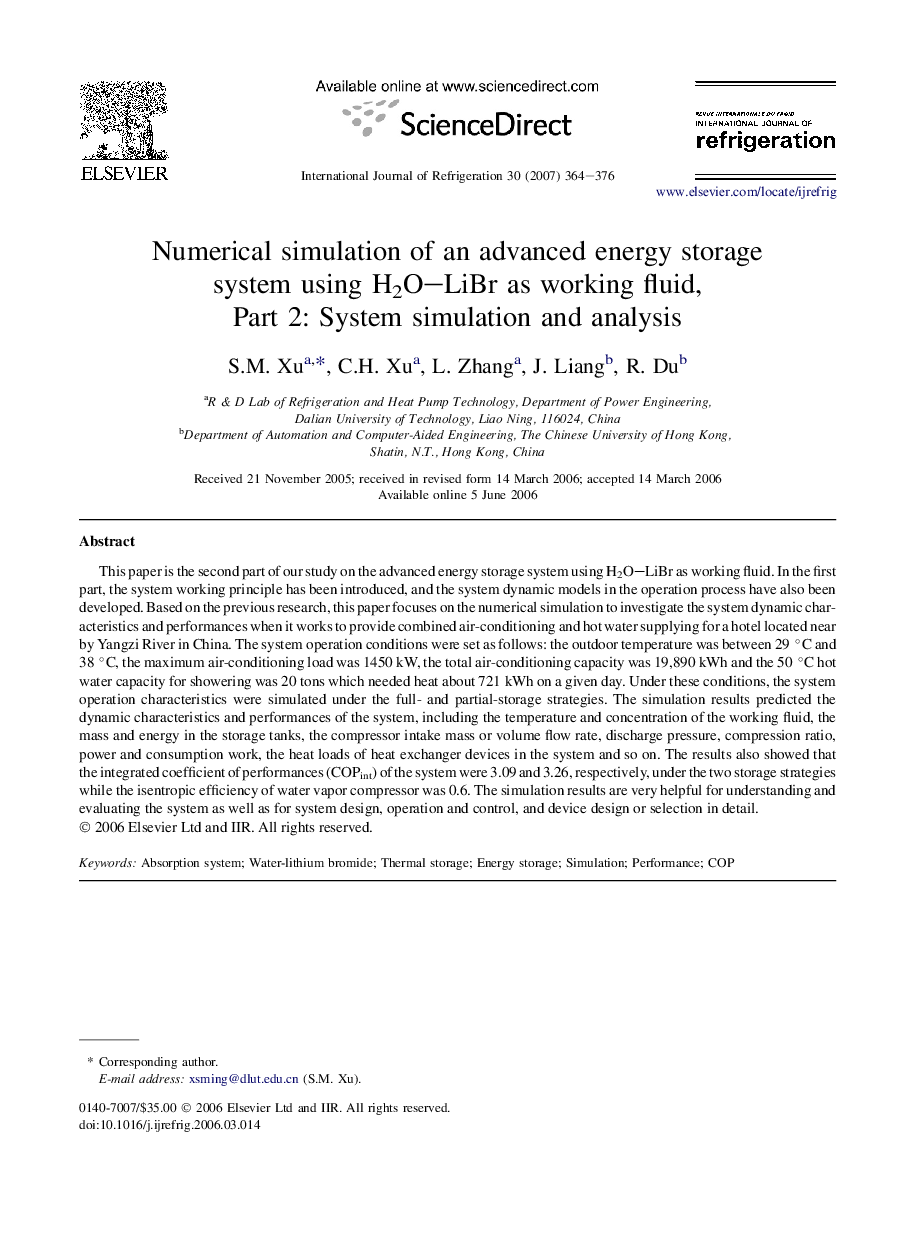| Article ID | Journal | Published Year | Pages | File Type |
|---|---|---|---|---|
| 787619 | International Journal of Refrigeration | 2007 | 13 Pages |
This paper is the second part of our study on the advanced energy storage system using H2O–LiBr as working fluid. In the first part, the system working principle has been introduced, and the system dynamic models in the operation process have also been developed. Based on the previous research, this paper focuses on the numerical simulation to investigate the system dynamic characteristics and performances when it works to provide combined air-conditioning and hot water supplying for a hotel located near by Yangzi River in China. The system operation conditions were set as follows: the outdoor temperature was between 29 °C and 38 °C, the maximum air-conditioning load was 1450 kW, the total air-conditioning capacity was 19,890 kWh and the 50 °C hot water capacity for showering was 20 tons which needed heat about 721 kWh on a given day. Under these conditions, the system operation characteristics were simulated under the full- and partial-storage strategies. The simulation results predicted the dynamic characteristics and performances of the system, including the temperature and concentration of the working fluid, the mass and energy in the storage tanks, the compressor intake mass or volume flow rate, discharge pressure, compression ratio, power and consumption work, the heat loads of heat exchanger devices in the system and so on. The results also showed that the integrated coefficient of performances (COPint) of the system were 3.09 and 3.26, respectively, under the two storage strategies while the isentropic efficiency of water vapor compressor was 0.6. The simulation results are very helpful for understanding and evaluating the system as well as for system design, operation and control, and device design or selection in detail.
